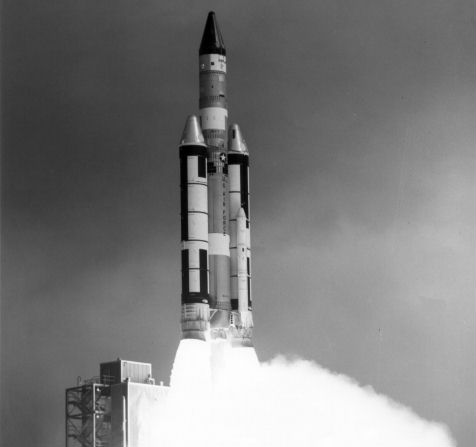TITAN III-C FACT SHEET
By Cliff Lethbridge

Titan III-C Launch, Photo Courtesy U.S. Air Force
Classification: Space Launch Vehicle
Length: 157 feet
Diameter: 10 feet
Date of First Cape Canaveral Launch: June 18, 1965
Date of Final Cape Canaveral Launch: March 6, 1982
Number of Cape Canaveral Launches: 36
An improved version of the Titan III-A, the Titan III-C was introduced in 1965. The most striking modification over the Titan III-A was the addition of two huge strap-on solid rocket boosters. The United Technologies solid rocket boosters were each 85 feet tall and 10 feet wide and were comprised of five individual segments. Each could produce a remarkable 1,174,600-pound thrust. The boosters burned Powered Aluminum/Ammonium Perchlorate solid fuel. The Aerojet dual chamber first stage engine could produce a total thrust of 532,000 pounds. An Aerojet second stage engine could produce a 101,000-pound thrust. Both engines burned Aerozine 50/Nitrogen Tetroxide liquid fuel. The Titan III-C Transtage third stage Aerojet engine also burned Aerozine 50/Nitrogen Tetroxide liquid fuel and could produce a thrust of 16,000 pounds. With the significant performance improvements which resulted from introducing twin solid rocket boosters, the Titan III-C was able to carry a 29,600-pound payload to low-Earth orbit or a 3,600-pound payload to geostationary transfer orbit.


